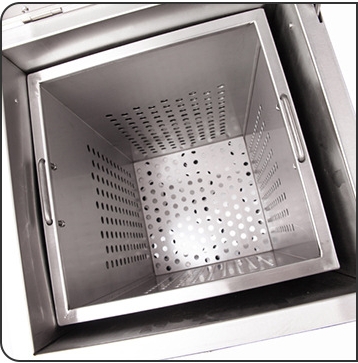feed mixer grinder
Dec . 15, 2024 15:21 Back to list
feed mixer grinder
The Importance and Functionality of Feed Mixer Grinders in Agriculture
In the ever-evolving world of agriculture, efficiency and productivity are paramount for success. One essential piece of equipment that has revolutionized the feeding process in livestock farming is the feed mixer grinder. This machine plays a critical role in ensuring that farmers can effectively combine various feed ingredients, enhancing nutrition while streamlining operations.
Understanding Feed Mixer Grinders
A feed mixer grinder is a versatile machine designed to mix and grind different types of animal feed, making it easier to provide a balanced diet for livestock. It typically consists of a large mixing chamber, grinding components, and a discharge chute. Farmers can load various feed ingredients into the machine, such as grains, hay, protein meals, vitamins, and minerals, which are then blended into a consistent mixture.
The grinding aspect of the machine breaks down the raw materials into smaller, more digestible particles, ensuring that animals can absorb nutrients more efficiently. The mixer component guarantees that all the ingredients are evenly distributed, preventing nutritional deficiencies that can arise from uneven feeding.
Benefits of Using Feed Mixer Grinders
1. Enhanced Nutritional Value One of the primary advantages of a feed mixer grinder is the ability to produce a balanced diet that meets the specific nutritional needs of livestock. With the capability to incorporate various ingredients, farmers can formulate rations that optimize health, growth, and milk production in dairy cattle, for instance.
2. Improved Feed Efficiency By grinding and mixing feeds, these machines improve feed efficiency. Smaller particle sizes allow for better digestion and nutrient absorption. Livestock that receive well-balanced, finely mixed feed tend to grow faster and exhibit better health, translating into improved productivity for farmers.
feed mixer grinder

3. Cost-Effectiveness Feed mixer grinders enable farmers to utilize different feed sources, including byproducts or less expensive ingredients, thus reducing overall feed costs. The ability to mix feeds on-site allows for immediate adjustments based on price fluctuations, further enhancing cost management.
4. Time Savings and Labor Reduction Manual mixing of feed can be a labor-intensive and time-consuming process. Feed mixer grinders automate this task, saving farmers valuable time and allowing them to focus on other critical areas of their operations. This mechanization can also reduce labor costs, making farms more sustainable.
5. Consistency in Feed Quality Feed consistency is crucial for livestock nutrition. The mixing process ensures that each batch of feed provides a uniform nutritional profile, reducing the risk of over- or under-feeding specific nutrients. This consistency is especially vital for young or growing animals that require stable diets.
Choosing the Right Feed Mixer Grinder
When selecting a feed mixer grinder, farmers should consider several factors. The size and capacity of the machine should align with their operation scale. Larger farms may require more powerful models capable of handling bigger volumes, while smaller farms may benefit from compact and efficient designs.
Additionally, durability and maintenance are essential considerations. Machines constructed from high-quality materials will withstand the rigors of daily use and reduce the frequency of repairs. Farmers should also evaluate the ease of operation and cleaning to ensure that they can efficiently manage the machine.
Conclusion
In summary, feed mixer grinders are indispensable tools in modern animal husbandry. They facilitate the creation of balanced, cost-effective, and high-quality animal feed, significantly enhancing the efficiency of livestock production. With their capacity to optimize nutrition and streamline processes, these machines are paving the way for more productive and sustainable farming practices. As the agricultural sector continues to grow, the importance of feed mixer grinders in meeting the nutritional needs of livestock will only become more pronounced. Farmers investing in these machines are not just improving their productivity but also contributing to the overall advancement of the agricultural industry.
-
Hot Sale 24 & 18 Door Rabbit Cages - Premium Breeding Solutions
NewsJul.25,2025
-
Automatic Feeding Line System Pan Feeder Nipple Drinker - Anping County Yize Metal Products Co., Ltd.
NewsJul.21,2025
-
Automatic Feeding Line System Pan Feeder Nipple Drinker - Anping County Yize Metal Products Co., Ltd.
NewsJul.21,2025
-
Automatic Feeding Line System - Anping Yize | Precision & Nipple
NewsJul.21,2025
-
Automatic Feeding Line System - Anping Yize | Precision & Nipple
NewsJul.21,2025
-
Automatic Feeding Line System-Anping County Yize Metal Products Co., Ltd.|Efficient Feed Distribution&Customized Animal Farming Solutions
NewsJul.21,2025






